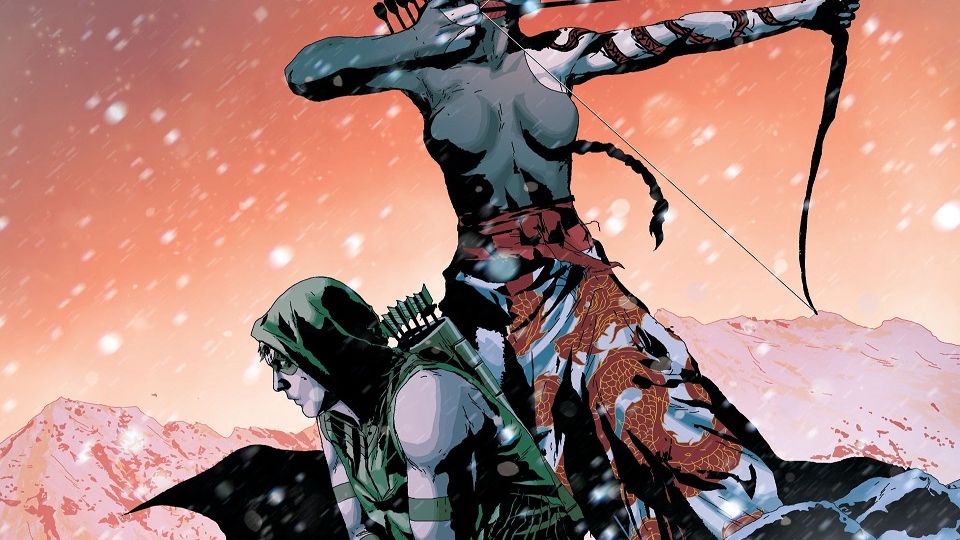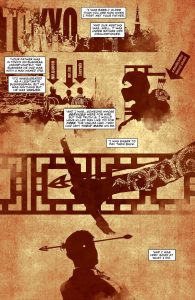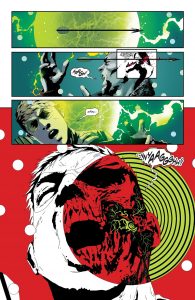
I’ve been meaning to write about Jeff Lemire’s Green Arrow but haven’t gotten a chance to do it so far no matter how hard I’ve tried. All of the opportunities I’ve theoretically had have theoretically escaped me at every chance. So I apologize if I gush a little (well a lot) over how good Lemire and Sorrentino’s Green Arrow has been (and is).
Green Arrow is probably my favorite character out of the DC Comics stable, with The Flash and Batman trailing close behind. His character has (in my opinion) consistently had good runs (save for Krul and Nocenti). Runs such as Grell’s and O’Neil’s really defined elements of the character that were non-existent prior to 1969. His character is defined as a hot-headed, leftist activist with a penchant for womanizing and fighting for the little guy. The new 52 threw those aspects away, and while that’s been good for a couple things (the womanizing was really a cringe-worthy, socially wrong thing for a leftist character to do), it’s really eliminated important traits that made the character of Green Arrow so memorable. So when Lemire came on with issue #17, he threw away 99% of the continuity from the previous 17 issues (including #0) and brought back some of those important elements to a degree while adding to the Arrow mythology like no one ever really has before.
What Lemire has done in these past seven issues of Green Arrow is tie the character and his supporting cast to elements of eastern mysticism dealing with ancient clans based around totem weapons (Fist, Sword, Axe, Spear, Shield, and Arrow) collectively known as the Outsiders and vision quests conjured from psychedelics slipped in drinks. It has a distinctly “ancient-Asian” feel so to speak, and the mysticism and mythology that it deals with is incredibly expansive. In addition, Lemire combines the tone of mysticism with a tone of gritty noir by having a separate sub-plot of a gang-war going down in Seattle led by Billy Tockman (reinterpreted version of the first Clock King) and a new version of martial artist Richard Dragon. Lemire juggles two different tones (and subsequently two plots) and his ability to balance the amount of time dealing with both is breathtakingly strong.
But what happens in Green Arrow #23? Well, we learn the origins of Shado and the Outsiders as well as the role they play in the crux of the story. Also, we deal with Count Vertigo, who has been chasing Ollie down after he freed Shado from his dungeon in the last issue. Vertigo gets tied in to the Outsiders (without actually being one) and we see a small fight between him, Shado and Arrow. It’s an excellent progression of the story and we get an in-depth look at the personalities behind each main characters. Also, as mentioned before, Richard Dragon gets introduced in a fantastically brutal way.
I’ll admit I’ve been on-and-off on Lemire’s writing before. I immensely enjoy his creator-owned work, but his superhero books dip in and out of mediocrity. The Rotworld-stretch of Animal Man was an incredibly painful read, but was salvaged by an emotionally damaged ending. Superboy was run-of-the-mill (to be fair I just don’t like Superboy). His superhero work dips in and out of being good and bad (in my own personal sense of what qualifies as good and bad) but Green Arrow has been consistently good in these seven issues so far. Lemire gives a uniquely human voice to each character, making Arrow a guy who fights for the little guys, Shado a caring yet dangerous assassin, and Vertigo a depressive, almost self-loathing, conceited piece of royalty. These characters actually feel like they could be people.
The exposition and the fight scenes are well done and illustrated beautifully by artist Andrea Sorrentino. For the exposition, Sorrentino illustrates a flashback through what looks like illustrations on an old, scroll-like piece of paper and draws the fight scenes with a very kinetic, imaginative style. His rendering of Count Vertigo’s powers, as seen in the image (to wherever it gets placed in the review) , develop an imagery of sound in a new way, with the coloring enhancing it as well. Elsewhere he touches up on little things by using renderings of scopes to focus in on where the arrows hit their targets and whatnot. It’s the little things that build up to the bigger stuff which makes long-term runs like this so worth it. I know decompression gets a bad rap but it works perfectly here by adding to the tension and mystery, and the art certainly helps the wait between issues.
Green Arrow by Jeff Lemire and Andrea Sorrentino is easily (again, in my opinion) one of the best comics DC is publishing right now. It’s building a unique mythology around the titular weapons of the character, and is simultaneously bringing back elements of the old character whilst introducing new ones to give this version a unique take. I’d say it’s definitely worth checking out. I just wish they would bring back his beard.














